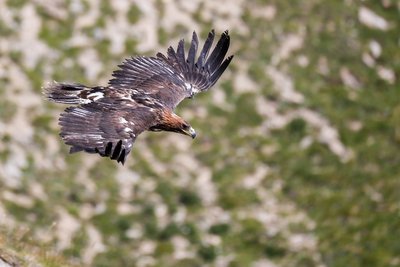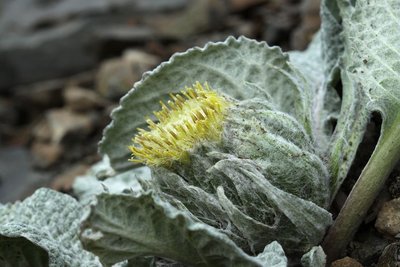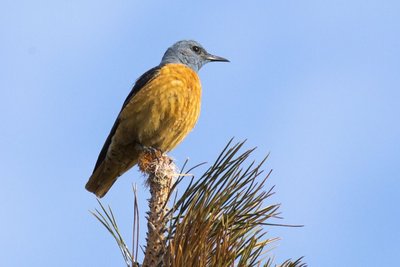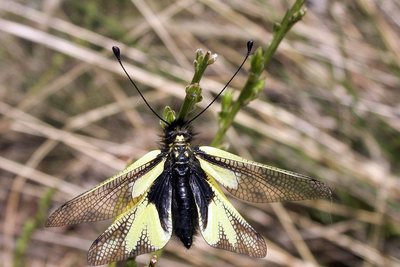
The Montbrison tour (trail route no. 13)
Attachment
- Downloadpdf
topo 13
Credit: JL
Description
From the Le Courounba campsite, head to the bridge spanning the Gyronde. Turn right as you exit the bridge.
- Turn left after the restaurants and carry on along the Rif Cros mountain stream.
- Fork left and cross the mountain stream. Follow the hairpin track and balcony traverse until you come to the hamlet of Le Bouchier. Carry on uphill.
- Continue on the left-hand track to reach the Col de la Trancoulette.
- At the Col de la Trancoulette start the descent to the left, taking the marked route on the south-facing side of the valley to return to Les Vigneaux and your starting point.
- Departure : Camping le Courounba, Les Vigneaux
- Arrival : Camping le Courounba, Les Vigneaux
- Towns crossed : Les Vigneaux, Saint-Martin-de-Queyrières, and Vallouise-Pelvoux
Altimetric profile
Recommandations
Before setting off, it is very important to check the opening periods for this route on the website: https://stationdetrail.com/fr/stations/le-pays-des-ecrins/parcours
Share your photographs on social networks with #stationdetrailecrins
Check weather conditions before setting off.
Rescue services contact details: Secours Montagne (Mountain Rescue): +33 (0)4 92 22 22 22 or 112
Show consideration for the work of farmers, livestock keepers and owners
Close all gates behind you
Take your litter home
Do not take shortcuts across pastureland
The trail routes are also suitable for walking
Information desks
Place de l'Eglise, 05340 Vallouise
Vallouise Park house
, 05290 Vallouise
Information, documentation, models, exhibitions, screenings, product sales and works of the Park. Guided tours for school, reservation required. The new Park House opened in Vallouise since June 1, and offers visitors an interactive permanent exhibition inviting to explore the area and its heritage. A temporary exhibition space will allow a renewed offer. Finally, the device is completed by an audiovisual room to organize screenings and conferences Free admission. All animations of the Park are free unless otherwise stated.
Transport
Public transport >> www.pacamobilite.fr
Consider car-sharing >> www.blablacar.fr
For more information, ask at the Tourist Information Office nearest to the trail starting point.
Access and parking
Parking :
Sensitive areas
- Impacted practices:
- Land, Vertical
- Sensitivity periods:
- JanFebMarAprMayJunJulAugSepOctNovDec
- Contact:
LPO PACA antenne de Briançon
0492219417
hautes-alpes@lpo.fr
Short-toed snake eagle
- Impacted practices:
- Aerial,
- Sensitivity periods:
- MarAprMayJunJulAugSep
- Contact:
- Parc National des Écrins
Julien Charron
julien.charron@ecrins-parcnational.fr
Black grouse - winter
- Impacted practices:
- , Land
- Sensitivity periods:
- JanFebMarAprDec
- Contact:
- LPO Paca antenne des Hautes-Alpes
0492219417
hautes-alpes@lpo.fr
http://paca.lpo.fr/partias
17 points of interest

Eglise des Vigneaux - Blandine Reynaud - PDE  History
HistoryThe village of Les Vigneaux
In spite of the altitude, the region's dry climate and the local growing conditions of limestone and sediments facing due south made the planting of grapevines possible as far back as the tenth century. The municipality owes its name to the presence of these vineyard operations, which were very significant in the late nineteenth century. The almost simultaneous appearance of the phylloxera aphid and the Briançon train, bringing wine from Provence, spelled the end of this activity here.

Aigle royal - Pascal Saulay - Parc national des Écrins  Fauna
FaunaThe eagles of the Tête d'Aval
Eagles can be seen gliding around the Tête d'Aval. In the hottest part of the day, they circle on the thermals rising above the limestone cliffs. Having gained height in this way, they can reach their hunting territory without having to flap their wings.

La calamagrostide argentée - Denis Fiat - Parc national des Écrins  Flora
FloraAchnatherum calamagrostis or silver spike grass
This member of the Gramineae family (now called Poaceae) forms large clumps on stony, dry and sunny ground. It grows in abundance here on the track embankment, taking advantage of the sunlight allowed through by the break in the forest. Its inflorescences reflecting silvery-gold glints are made up of flowerets with long edges. They create a very misty effect in the late summer when the plant is mature, forming large shimmering bouquets in the evening sunlight. .

Une marmotte - Thibault Blais Photographie  Fauna
FaunaThe marmot
In the alpine pastures, the iconic marmot utters a loud high-pitched whistle to warn its neighbours of approaching danger: the golden eagle is on the prowl! This medium-sized rodent prefers to live in the high-mountain grasslands in family groups. Their favourite pastimes are gnawing, digging, taking a siesta in the sunshine and performing somersaults. In the winter, the marmot takes refuge in its burrow where it hibernates. It is only seen between the months of April and October. It marks the boundary of its territory by rubbing its cheeks on the rocks or leaving droppings.

Bérardie laineuse - Cédric Dentan - Parc national des Écrins  Flora
FloraThe woolly berardia
The woolly berardia is a plant that grows approximately 10 centimetres tall and has a short, almost non-existent stem. This perennial member of the Asteracea family grows in limestone and schist screes. It has veined oval, woolly leaves which are covered in soft hairs. Its 4 to 7 cm compact head with pale yellow flowers stands up from its centre.

Le monticole de roche - Pascal Saulay - Parc national des Écrins  Flora
FloraThe common rock thrush
In May, a melodious song rings out from the cliff top. It’s the song of the common rock thrush, appropriately named and a wonderful bird. Although the female is rather dull (an advantage when egg-sitting) the male sports an orange underside and a blue-grey head. A trans-Saharan migratory bird, every year it returns to the mountains of Southern Europe where it frequents the rocky, sunlit slopes. It is not very common and is in decline, so spotting it is even more special!
Canal du Béal Neuf - Office de tourisme Pays des Écrins  Water
WaterThe role of the canals
Irrigation of meadows and private gardens; preservation of traditions; the promotion of social contact through collective canal maintenance operations carried out by local people; development of canals to create trails for tourists and locals... The canals have fulfilled a variety of roles, hence the benefit of conserving and maintaining them.

La carline à feuilles d'acanthe - Bernard Nicollet - Parc national des Écrins  Flora
FloraThe acanthus-leaved thistle
This is a hot, west-exposed slope with rocky ground. The plant life reflects this situation: the narrow-leaved lavender and acanthus-leaved thistle grow here. The latter looks like a large sun with its very big flower head which quickly turns golden and its leaves radiating out around it. It often used to be hung on house doors... but much better to leave it lighting up the stony meadows!
le cirse de Montpellier - Mireille Coulon - Parc national des Écrins  Flora
FloraThe Montpellier thistle
A large plant grows along the canal side; a sort of thistle although it is not spiky: the Montpellier thistle. Its oval, pointed leaves are edged with large, stiff but non-spiky cilia. Its flowers are pink. In France, it is only found in the Alps and the Pyrenees and a few departments in the south. Associated with wet areas, this species has become rare in many regions because of damage to its habitat.

Torrent de Paulin - Office de tourisme Pays des Écrins  Water
WaterMountain land rehabilitation projects
Stream correction dams have been built by RTM (Mountain Land Rehabilitation), a branch of the National Forestry Agency. The purpose of these structures is to limit erosion and mountain stream flooding. The RTM has been in existence for a long time, set up in the late nineteenth century. At that time, the slopes where much more sparsely wooded than they are today, and erosion was a very significant problem.

L'ascalaphe soufré - Blandine Delenatte - Parc national des Écrins  Fauna
FaunaThe owly sulphur
A strange insect, part butterfly, part dragonfly, with large black antennae, transparent wings tinted with yellow or white and with well-defined veining, flies over the meadow during the hottest part of the day. It is the owly sulphur. Owlflies are members of the Neuroptera (net-winged) order and are cousins of ants and lacewings. They are predators of small insects, flies in particular.

Pic nir et ses petits au nid - Robert Chevalier - Parc national des Écrins  Fauna
FaunaThe black woodpecker
Sporting a black cap, the black woodpecker is the biggest of the woodpecker family. Wary and solitary, it is difficult to spot, but its strident calls give its presence away. It feeds mainly on ants and insects living in dead trees, which it extracts by hammering into the wood. It hollows out a nest hole in trees. Once the young have left the nest, it may be taken over by owls or forest-dwelling bats.

La limodore à feuilles avortées (limodorum abortivum) - Mireille Coulon - Parc national des Écrins  Flora
FloraThe violet bird's-nest orchid
In the pine forest undergrowth stands a large, completely purple orchid. It has no leaves, just a few whitish scales on the stem. Lacking chlorophyll (the green plant pigment which plays a role in photosynthesis, the process that allows the production of organic matter), it lives as a parasite on tree roots.

Aiguilles de pin sylvestre - Christian Baïsset - Parc national des Écrins  Flora
FloraThe Scots pine
A long trunk that is reddish-brown towards the top, sparse foliage, grey-green needles grouped in pairs... It has to be the Scots pine. Happy in poor soil, this softwood tree can withstand below-zero temperatures as well as summer droughts, and so it is very common in intra-alpine valleys with a continental climate, like the Vallouise.

Le torcol - Damien Combrisson - Parc national des Écrins  Fauna
FaunaThe northern wryneck
In the spring, an odd song can be heard among the old trees in the orchard, a loud song similar to that of the green woodpecker, only slower. It is that of the northern wryneck. This bird owes its name to the extreme way it extends and twists its neck when it feels threatened. Its French name torcol fourmilier is a reference to the fact that it feeds on ants (fourmils in French). Difficult to spot because its plumage merges into the colour of the tree trunks, it gives its presence away by its song when it returns from its migration.
Aiguilles de pin sylvestre - Parc national des Écrins  Flora
FloraOn the south-facing slope, pine forest
The track passes through a forest of Scots pines, mixed with some downy oak trees. It is a forest typical of those found in the lower south-facing slopes (those exposed to the sun) in the intra-alpine valleys.
Le chévrefeuille d'Étrurie - Bernard Nicollet - Parc national des Écrins  Flora
FloraEtruscan honeysuckle
Etruria was the territory of the Etruscans, in the area of present-day Tuscany. Although this honeysuckle does not grow only in Tuscany, it is Mediterranean, however, and only grows naturally in the wild in the southern half of France. Being a plant that needs warmth, it does not grow at altitude, except here where the south-facing slopes are particularly dry and warm. Its large pink and yellow flowers are highly perfumed.
Source

Report a problem or an error
If you have found an error on this page or if you have noticed any problems during your hike, please report them to us here:


